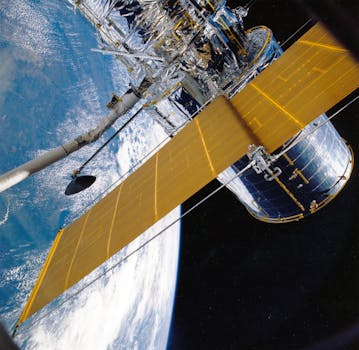LEO Satellites: Revolutionizing Global Connectivity with WordPress

LEO Satellites: Revolutionizing Global Connectivity with WordPress
Low Earth Orbit (LEO) satellites are a type of satellite that orbits the Earth at an altitude of around 160 to 2,000 kilometers. These satellites have been gaining popularity in recent years due to their ability to provide high-speed, low-latency internet connectivity to remote and underserved areas. With the help of WordPress, LEO satellites are now being used to revolutionize global connectivity and provide access to information for people all around the world.
The use of LEO satellites has several advantages over traditional geostationary satellites. For one, LEO satellites have a lower latency, which means that data can be transmitted and received much faster. This is because LEO satellites are closer to the Earth’s surface, which reduces the time it takes for signals to travel between the satellite and the user’s device. Additionally, LEO satellites have a higher bandwidth, which allows for faster data transfer rates and more concurrent connections.
How LEO Satellites Work

LEO satellites work by using a network of satellites that orbit the Earth in a low Earth orbit. These satellites are equipped with transceivers that can transmit and receive data to and from user devices on the ground. The data is then routed through the satellite network and transmitted to its final destination. This allows for high-speed, low-latency internet connectivity to be provided to remote and underserved areas where traditional internet infrastructure may not be available.
The use of LEO satellites also has several benefits for WordPress users. With the ability to provide high-speed, low-latency internet connectivity, LEO satellites can be used to host WordPress websites and provide access to information for people all around the world. This is especially useful for websites that require high-speed data transfer rates, such as video streaming and online gaming websites.
Real-World Applications of LEO Satellites

LEO satellites have several real-world applications, including providing internet connectivity to remote and underserved areas, supporting disaster relief efforts, and enabling IoT applications. For example, LEO satellites can be used to provide internet connectivity to rural areas where traditional internet infrastructure may not be available. This can help to bridge the digital divide and provide access to information and educational resources for people in these areas.
LEO satellites can also be used to support disaster relief efforts by providing critical communication services in areas where traditional communication infrastructure has been damaged or destroyed. This can help to coordinate relief efforts and provide vital information to people in affected areas.
Conclusion

In conclusion, LEO satellites are revolutionizing global connectivity and providing access to information for people all around the world. With the help of WordPress, LEO satellites can be used to host websites and provide high-speed, low-latency internet connectivity to remote and underserved areas. As the use of LEO satellites continues to grow, we can expect to see even more innovative applications of this technology in the future.
The future of LEO satellites looks bright, with several companies and organizations investing heavily in the development of new satellite technologies. For example, companies like SpaceX and Amazon are launching new satellite constellations that will provide high-speed, low-latency internet connectivity to remote and underserved areas. Additionally, organizations like the International Telecommunication Union (ITU) are working to develop new standards and regulations for the use of LEO satellites.
Overall, LEO satellites are an exciting and rapidly evolving field that has the potential to transform the way we communicate and access information. With the help of WordPress, LEO satellites can be used to provide high-speed, low-latency internet connectivity to remote and underserved areas and support a wide range of applications, from disaster relief to IoT applications.
See more:



